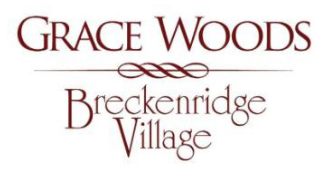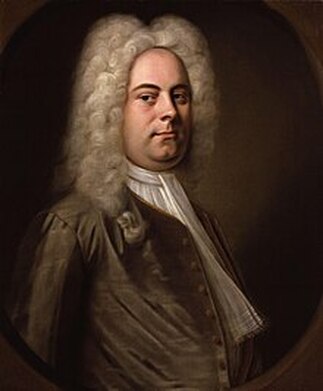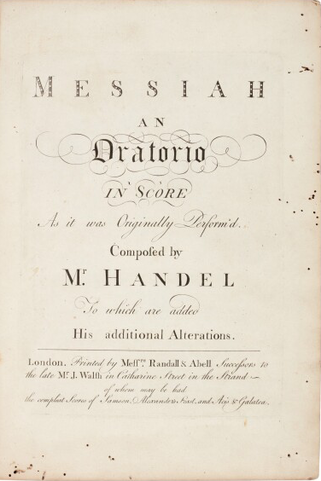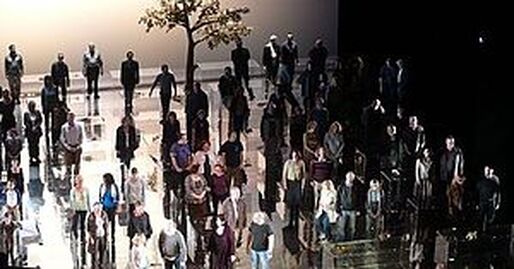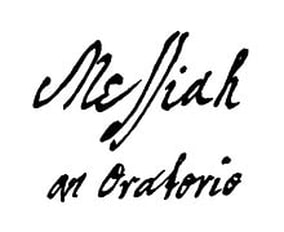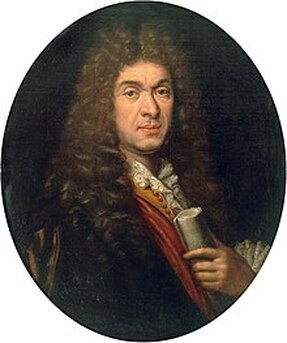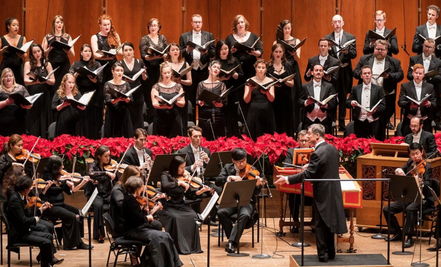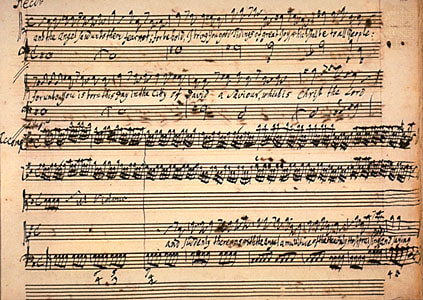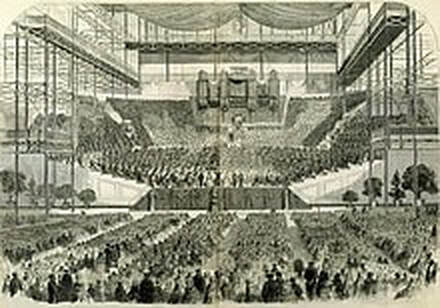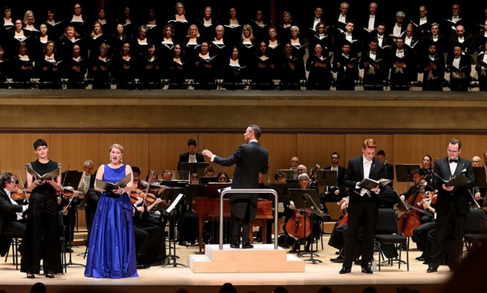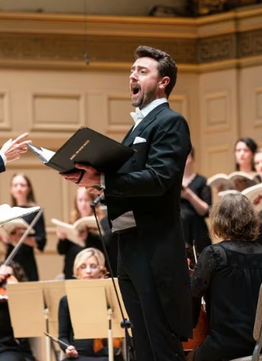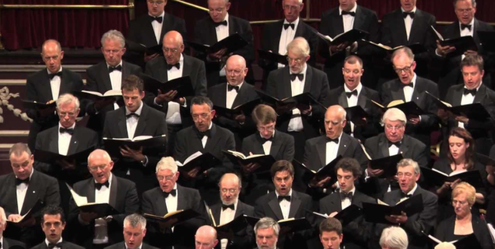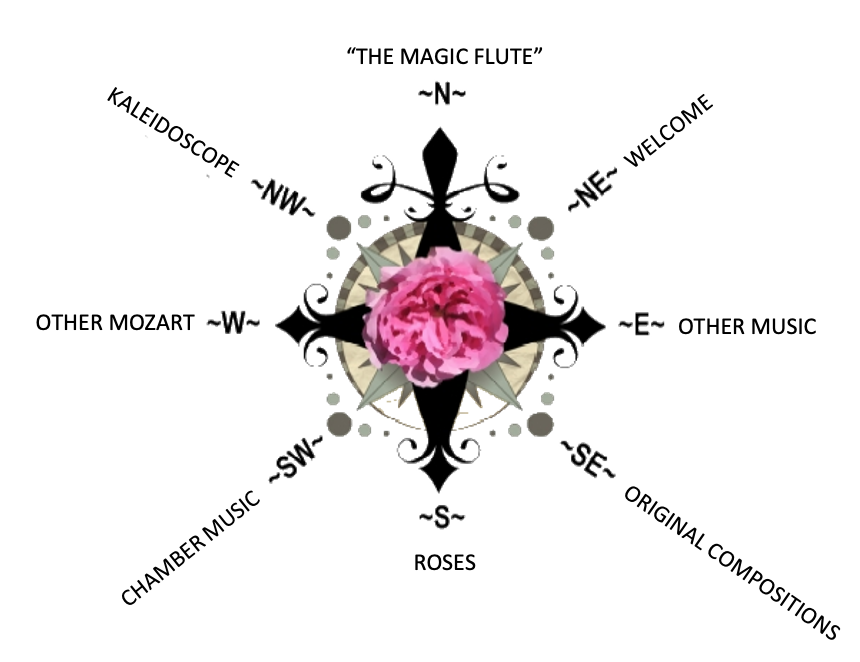- Home
- N - The Magic Flute
- NE - Welcome!
-
E - Other Music
- E - Music Genres >
- E - Composers >
-
E - Extended Discussions
>
- Allegri: Miserere
- Bach: Cantata 4
- Bach: Cantata 8
- Bach: Chaconne in D minor
- Bach: Concerto for Violin and Oboe
- Bach: Motet 6
- Bach: Passion According to St. John
- Bach: Prelude and Fugue in B-minor
- Bartok: String Quartets
- Brahms: A German Requiem
- David: The Desert
- Durufle: Requiem
- Faure: Cantique de Jean Racine
- Faure: Requiem
- Handel: Christmas Portion of Messiah
- Haydn: Farewell Symphony
- Liszt: Évocation à la Chapelle Sistine"
- Poulenc: Gloria
- Poulenc: Quatre Motets
- Villa-Lobos: Bachianas Brazilieras
- Weill
-
E - Grace Woods
>
- Grace Woods: 4-29-24
- Grace Woods: 2-19-24
- Grace Woods: 1-29-24
- Grace Woods: 1-8-24
- Grace Woods: 12-3-23
- Grace Woods: 11-20-23
- Grace Woods: 10-30-23
- Grace Woods: 10-9-23
- Grace Woods: 9-11-23
- Grace Woods: 8-28-23
- Grace Woods: 7-31-23
- Grace Woods: 6-5-23
- Grace Woods: 5-8-23
- Grace Woods: 4-17-23
- Grace Woods: 3-27-23
- Grace Woods: 1-16-23
- Grace Woods: 12-12-22
- Grace Woods: 11-21-2022
- Grace Woods: 10-31-2022
- Grace Woods: 10-2022
- Grace Woods: 8-29-22
- Grace Woods: 8-8-22
- Grace Woods: 9-6 & 9-9-21
- Grace Woods: 5-2022
- Grace Woods: 12-21
- Grace Woods: 6-2021
- Grace Woods: 5-2021
- E - Trinity Cathedral >
- SE - Original Compositions
- S - Roses
-
SW - Chamber Music
- 12/93 The Shostakovich Trio
- 10/93 London Baroque
- 3/93 Australian Chamber Orchestra
- 2/93 Arcadian Academy
- 1/93 Ilya Itin
- 10/92 The Cleveland Octet
- 4/92 Shura Cherkassky
- 3/92 The Castle Trio
- 2/92 Paris Winds
- 11/91 Trio Fontenay
- 2/91 Baird & DeSilva
- 4/90 The American Chamber Players
- 2/90 I Solisti Italiana
- 1/90 The Berlin Octet
- 3/89 Schotten-Collier Duo
- 1/89 The Colorado Quartet
- 10/88 Talich String Quartet
- 9/88 Oberlin Baroque Ensemble
- 5/88 The Images Trio
- 4/88 Gustav Leonhardt
- 2/88 Benedetto Lupo
- 9/87 The Mozartean Players
- 11/86 Philomel
- 4/86 The Berlin Piano Trio
- 2/86 Ivan Moravec
- 4/85 Zuzana Ruzickova
-
W - Other Mozart
- Mozart: 1777-1785
- Mozart: 235th Commemoration
- Mozart: Ave Verum Corpus
- Mozart: Church Sonatas
- Mozart: Clarinet Concerto
- Mozart: Don Giovanni
- Mozart: Exsultate, jubilate
- Mozart: Magnificat from Vesperae de Dominica
- Mozart: Mass in C, K.317 "Coronation"
- Mozart: Masonic Funeral Music,
- Mozart: Requiem
- Mozart: Requiem and Freemasonry
- Mozart: Sampling of Solo and Chamber Works from Youth to Full Maturity
- Mozart: Sinfonia Concertante in E-flat
- Mozart: String Quartet No. 19 in C major
- Mozart: Two Works of Mozart: Mass in C and Sinfonia Concertante
- NW - Kaleidoscope
- Contact
HEARING HANDEL’S MUSIC FOR MESSIAH
AN OVERVIEW OF THE BAROQUE MUSIC AESTHETIC
by Judith Eckelmeyer
(GRACE WOODS MUSIC SESSION DECEMBER 3, 2023)
We’ll begin by getting acquainted with a necessary vocabulary for this session. As I think you all know, Handel (1685-1759) was born in Saxony, Germany, and spent his later years in London, where he and oratorio, both of which are relevant for today’s session. As he was working in the late Baroque style, Handel employed the “language” of music at that time. That “language” was intended to convey certain types of meaning to listeners for more effectively reaching their understanding and moving them emotionally. The devices used to do this were common at the time and are important for our “rehearing” Handel’s arguably most well-known work, the oratorio Messiah. So let’s begin!
OPERA: a staged drama conveyed through music, set up as a play in scenes and acts. The musical contents are usually an overture, recitatives, arias, choruses, and frequently (especially in France) dances. Operas were exceedingly popular in this time as entertainment not only for the court and the upper-middle class, but as of about 1728, also for commoners of lower class as well. Opera’s function in society might be equated with movies in our time. The typical opera was based on Italian models and sung in Italian. Operas using heroic, historical, or mythological subjects were called Opera Seria, and conformed to many conventions that were developed by that time. Opera Buffa, relying on comedic conventions of the commedia dell’ arte, used ordinary characters of the day in parodies of domestic or cultural situations that all citizens could recognize. In these operas, the music was far less formal that that of the Opera Seria, and in fact began to employ the early- or pre-classical song style that was emerging in popular genres.
ORATORIO: an unstaged drama or extended philosophical work conveyed through music, also set up in longer sections analogous to an act in a drama, and sometime shorter segments analogous to a scene in a drama. The musical contents are generally the same as in opera, but any dances would not be enacted, of course.
FRENCH OVERTURE: As head of Louis XIV’s court music and entertainment, Jean Baptiste Lully began consistently structuring his opera overtures in a 3-section pattern. The first section was slow (even pompous), chordal (i.e. homophonic), and featuring a long-short rhythm throughout; because the notation for this rhythm involved using a dot after the first note to lengthen it, this is called a “dotted rhythm”. The second section was markedly faster and polyphonic (several different melody lines occurring at the same time); gone was the dotted rhythm and the sense of pomposity. The third section brought back the slow tempo, chordal style and dotted rhythm. Lully’s style of overture was adopted all over Europe and called the “French Overture”; it introduced both large and smaller genres (such as cantatas).
ORCHESTRA: Strings were the bedrock of the Baroque orchestra, but the aptly-named continuo was an ever-present feature with them. The continuo consisted of a harmony-producing instrument (harpsichord, organ, guitar, etc.) undergirded by a bass melody instrument (string bass or cello, bassoon, organ pedals, etc.). Additionally, oboes, flutes, bassoons, natural (valveless) horns and trumpets, and timpani were often a part of the ensemble for grand or special effects. The range of pitch and dynamics increased from the earlier Renaissance music, but was still not extreme; good taste was a by-word.
ORNAMENTS: Baroque music typically included “ornaments”, short decorative additions to the main melody notes. In the written music these each had their own symbol. French composers in particular used ornaments abundantly, indicated by symbols which performers had to understand and execute with facility and grace. Ornaments were applied in both instrumental and vocal music, and sometimes were unwritten but expected to be improvised, as in the da capo section of an aria.
SINGERS: The Baroque was the era in which solo singers finally were treated with the kind of attention that instrumentalists had won. Traditional ranges of soprano, alto/contralto, tenor and bass were as we know them now, and the aria was their primary vehicle for displaying their abilities. Various styles of music were available for all ranges: graceful evocative arioso, dramatic declamation, fast and wide-ranging rage arias, and more. An important addition to the class of singers in the Baroque era was the castrato, a male who as a youngster had such a beautiful voice that he was sought out to continue singing in his youthful high range by undergoing castration (at the hands of unscrupulous and cruel “managers”). These singers as adults often became the superstars of the era; their extraordinary power combined with the unearthly quality of their voice brought them fame and fortune in leading (male) roles in Opera seria. Who wrote works for them?? Well, certainly Handel and his contemporaries, both English and Italian, and even Mozart.
RECITATIVE:
DRY (SECCO): Prose text for a soloist, usually declamatory, set to music without repetition, in which the music’s rhythm is dictated by the accents and pace of the spoken words. A very plain melody allows the text great clarity; there is very simple accompaniment which will keep the singer “oriented” to a tonality but not interfere with the presentation of text. Text is the most important aspect of this type of recitative.
ACCOMPANIED: The soloist’s text is more poetic or descriptive or emotional than simply declamatory. There is a more developed melody and an accompaniment that typically includes strings, and there are often repeated segments of text. The rhythm of the melody is not strictly dictated by the rhythm of the text as it would be spoken.
DRY (SECCO): Prose text for a soloist, usually declamatory, set to music without repetition, in which the music’s rhythm is dictated by the accents and pace of the spoken words. A very plain melody allows the text great clarity; there is very simple accompaniment which will keep the singer “oriented” to a tonality but not interfere with the presentation of text. Text is the most important aspect of this type of recitative.
ACCOMPANIED: The soloist’s text is more poetic or descriptive or emotional than simply declamatory. There is a more developed melody and an accompaniment that typically includes strings, and there are often repeated segments of text. The rhythm of the melody is not strictly dictated by the rhythm of the text as it would be spoken.
ARIA (AIR): A soloist sings an extended poetic text with a fully developed melody and accompaniment. The aria is usually formally structured in three segments. The first section, “A”, provides the main idea of the poetry; it has its own characteristic melody and accompaniment and comes to a full cadence at its end. However, the aria continues to the second section, “B”. It has a contrasting text idea and is set with a new melody and is in a different but related key from the “A” section; it may come to complete cadence, or it may continue into a “retransition” to the “A” section. The third part of the aria is not truly new material but is a “recap” of the “A” section, essentially re-presented from the beginning, or “head”, and is thus called the da capo section. (Thus, this formal type of aria is called a Da capo aria.) In this repeated “A” section the soloist has liberty to add improvised ornamentation (within the bounds of “good taste”) to the original melody.
CHORUSES: Depending on the subject of the composition, a chorus could be used to add emphasis to a moment of text; it could represent a crowd in a story, or it could create an apex or conclusion of a story’s trajectory. Most choruses were comprised of 4 voice parts with multiple singers on a part: soprano, alto, tenor and bass. As we have already observed in a previous session, a chorus could consist of only three voices: soprano, tenor and bass. Choruses, like Baroque orchestras, were generally relatively small, perhaps 18-24 singers; at that size they could perform both chordal (homophonic) music or polyphonic music such as a fugue with clarity, fluency and at considerably fast tempo when needed.
WORD PAINTING: This is a compositional device by which a composer uses music analogous to the action referred to in a word in the text. For example, if the word is “above”, the pitch would be high; if the word was “run”, the setting might be a string of short notes suggesting speed.
Judith Eckelmeyer © 2023
Internationally acclaimed vocal group VOCES8 headline the Academy of Ancient Music's performance of Handel's beloved oratorio Messiah, recorded live at the Chapel of Trinity College, Cambridge. Academy of Ancient Music VOCES8 and Apollo5 VOCES8 Foundation Choir Conductor: Barnaby Smith Leader: Bojan Čičić
PART THE FIRST
00:00 - Symphony
03:25 - 'Comfort Ye My People' (Blake Morgan, tenor)
06:49 - 'Ev'ry Valley Shall Be Exalted' (Euan Williamson, tenor)
10:28 - 'And The Glory Of The Lord'
13:19 - 'Thus Saith The Lord' (Christopher Moore, bass)
14:42 - 'But Who May Abide The Day Of His Coming' (Katie Jeffries-Harris, alto)
19:05 - 'And He Shall Purify'
21:33 - 'Behold, A Virgin Shall Conceive' (Katie Jeffries-Harris, alto)
22:10 - 'O Thou That Tellest Good Tidings To Zion (Katie Jeffries-Harris, alto)
27:28 - 'For Unto Us A Child Is Born' 31:47 - Pastoral Symphony
32:55 - 'There Were Shepherds Abiding In The Field' (Eleonore Cockerham, soprano)
33:53 - 'And Suddenly There Was With An Angel' (Eleonore Cockerham, soprano)
36:04 - 'Rejoice Greatly, O Daughter Of Zion' (Penelope Appleyard, soprano)
40:45 - 'Then Shall The Eyes Of The Blind' (Katie Jeffries-Harris, alto)
41:21 - 'He Shall Feed His Flock' (Katie Jeffries-Harris, alto & Eleonore Cockerham, soprano)
46:51 - 'His Yoke Is Easy'
PART THE SECOND
49:26 - 'Surely He Hath Borne Our Griefs'
51:07 - 'And With His Stripes We Are Healed'
53:02 - 'And We Like Sheep Have Gone Astray'
56:53 - 'All They That See Him, Laugh Him To Scorn' (Euan Williamson, tenor)
57:33 - 'He Trusted In God'
01:00:05 - 'Why Do The Nations So Furiously Rage Together?' (Frederick Long, bass)
01:02:38 - 'Let Us Break Their Bonds Asunder'
01:04:33 - 'He That Dwelleth In Heaven' (Oliver Martin-Smith, tenor)
01:04:47 - 'Thou Shalt Break Them' (Oliver Martin-Smith, tenor)
01:07:02 - 'Hallelujah'
PART THE THIRD
01:11:01 - 'I Know That My Redeemer Liveth' (Andrea Haines, soprano)
01:17:50 - 'Since By Man Came Death'
01:20:18 - 'Behold, I Tell You A Mystery' (Frederick Long, bass)
01:21:03 - 'The Trumpet Shall Sound' (Frederick Long, bass)
01:25:19 - 'Worthy Is The Lamb That Was Slain'
01:28:58 - 'Amen'
00:00 - Symphony
03:25 - 'Comfort Ye My People' (Blake Morgan, tenor)
06:49 - 'Ev'ry Valley Shall Be Exalted' (Euan Williamson, tenor)
10:28 - 'And The Glory Of The Lord'
13:19 - 'Thus Saith The Lord' (Christopher Moore, bass)
14:42 - 'But Who May Abide The Day Of His Coming' (Katie Jeffries-Harris, alto)
19:05 - 'And He Shall Purify'
21:33 - 'Behold, A Virgin Shall Conceive' (Katie Jeffries-Harris, alto)
22:10 - 'O Thou That Tellest Good Tidings To Zion (Katie Jeffries-Harris, alto)
27:28 - 'For Unto Us A Child Is Born' 31:47 - Pastoral Symphony
32:55 - 'There Were Shepherds Abiding In The Field' (Eleonore Cockerham, soprano)
33:53 - 'And Suddenly There Was With An Angel' (Eleonore Cockerham, soprano)
36:04 - 'Rejoice Greatly, O Daughter Of Zion' (Penelope Appleyard, soprano)
40:45 - 'Then Shall The Eyes Of The Blind' (Katie Jeffries-Harris, alto)
41:21 - 'He Shall Feed His Flock' (Katie Jeffries-Harris, alto & Eleonore Cockerham, soprano)
46:51 - 'His Yoke Is Easy'
PART THE SECOND
49:26 - 'Surely He Hath Borne Our Griefs'
51:07 - 'And With His Stripes We Are Healed'
53:02 - 'And We Like Sheep Have Gone Astray'
56:53 - 'All They That See Him, Laugh Him To Scorn' (Euan Williamson, tenor)
57:33 - 'He Trusted In God'
01:00:05 - 'Why Do The Nations So Furiously Rage Together?' (Frederick Long, bass)
01:02:38 - 'Let Us Break Their Bonds Asunder'
01:04:33 - 'He That Dwelleth In Heaven' (Oliver Martin-Smith, tenor)
01:04:47 - 'Thou Shalt Break Them' (Oliver Martin-Smith, tenor)
01:07:02 - 'Hallelujah'
PART THE THIRD
01:11:01 - 'I Know That My Redeemer Liveth' (Andrea Haines, soprano)
01:17:50 - 'Since By Man Came Death'
01:20:18 - 'Behold, I Tell You A Mystery' (Frederick Long, bass)
01:21:03 - 'The Trumpet Shall Sound' (Frederick Long, bass)
01:25:19 - 'Worthy Is The Lamb That Was Slain'
01:28:58 - 'Amen'
Choose Your Direction
The Magic Flute, II,28.
